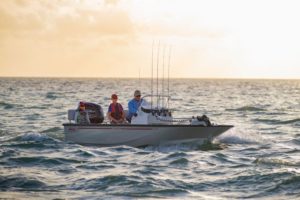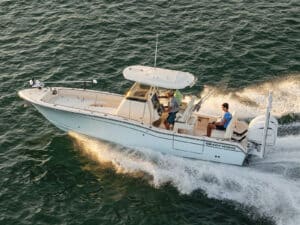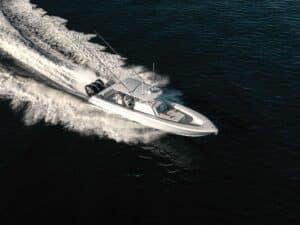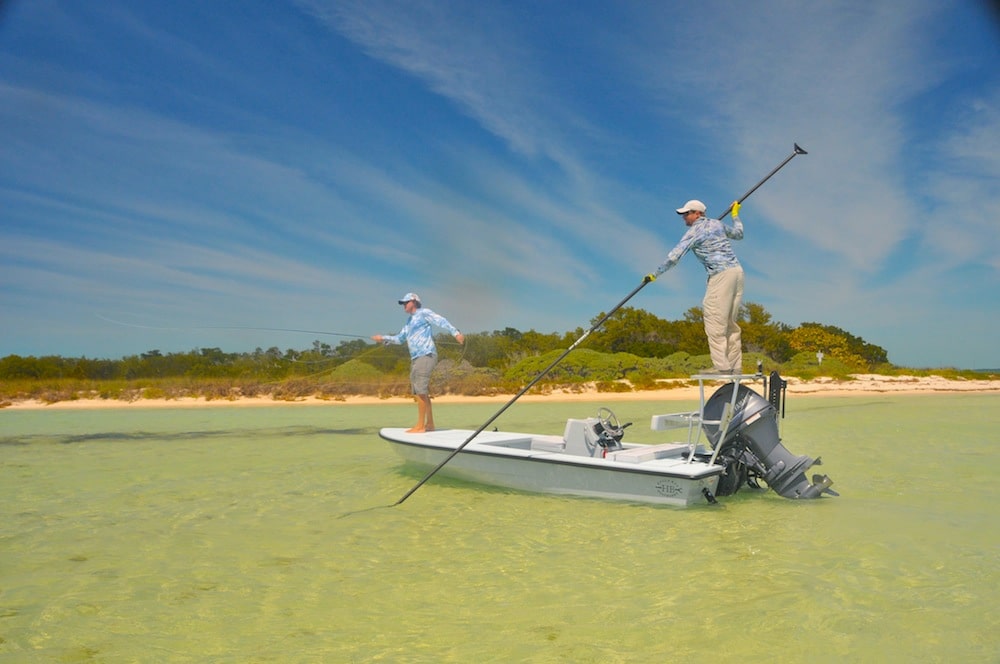
Within the world of shallow-water fishing in Florida, the Bahamas and the Caribbean, there exist degrees of shallow. While one boating angler considers a foot of water shallow, yet another stalks his quarry in even less.
When it comes to fishing the skinniest of flats, experts prefer a technical poling skiff, which allows them to float in mere inches of water and pole to within casting distance of the wariest fish, such as permit and bonefish, with stealth and precision. Yet, what distinguishes a technical poling skiff from other shallow-water fishing craft, such as a flats boat, in terms of both design and performance?
At first glance, flats boats and poling skiffs can be difficult to tell apart. In fact, the skiff is a direct descendent of the flats boat, which was first introduced in the 1950s. Flats boats — or what some call backcountry boats — dominated shallow-water fishing for decades. Yet some anglers yearned for boats that were lighter, easier to pole, more nimble and even quieter.
“In the 1990s, Maverick introduced the Mirage One, which was the first technical poling skiff,” says Charlie Johnson, director of marketing for Maverick Boat Company, which today offers the Mirage HPX line of poling skiffs. “The flat topsides of a poling skiff and a flats boat are similar. But it’s the highly specialized hull, advanced construction materials and Spartan-like interior that set a technical poling skiff apart.” Today, such models are offered by a number of boat companies, including Beavertail Skiffs, Dragonfly Boatworks, East Cape Skiffs, Hell’s Bay Boatworks, Skull Island Skiff Works, Ranger Boats, Sundance Boats and Yellowfin Yachts, as well as Maverick.
Small and Streamlined
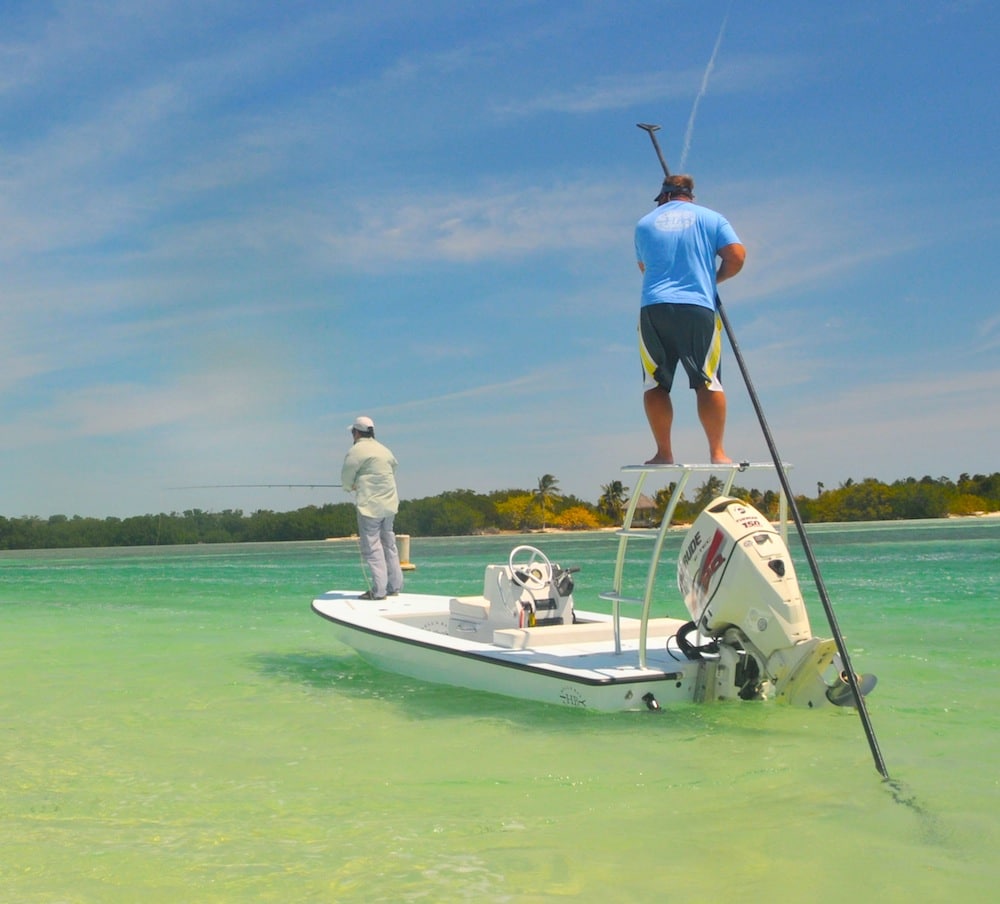
Technical poling skiffs are, by design, relatively small, according to Chris Peterson, owner and president of Hell’s Bay, which specializes in building these vessels and offers nine models. “For example, our Marquesa skiff is 18 feet in length and has a 6½-foot beam,” says Peterson. “The smaller footprint allows the skiff to more easily slip through the water, which is an important consideration when you’re poling all day.” The largest skiffs measure 18 to 19 feet in length, with many others in the 16- to 17-foot range. Technical poling skiffs also have lower profiles than flats or backcountry boats, and this helps achieve two goals, according to Johnson. The first is to reduce wind resistance. “The sheer line of our Mirage HPX skiffs is very close to the water, and so it virtually sneaks under the wind,” he explains. “This makes it easy to pole on a breezy day.
“Second, a lower profile also helps make these skiffs less visible to fish,” Johnson adds.
Lightweight Construction
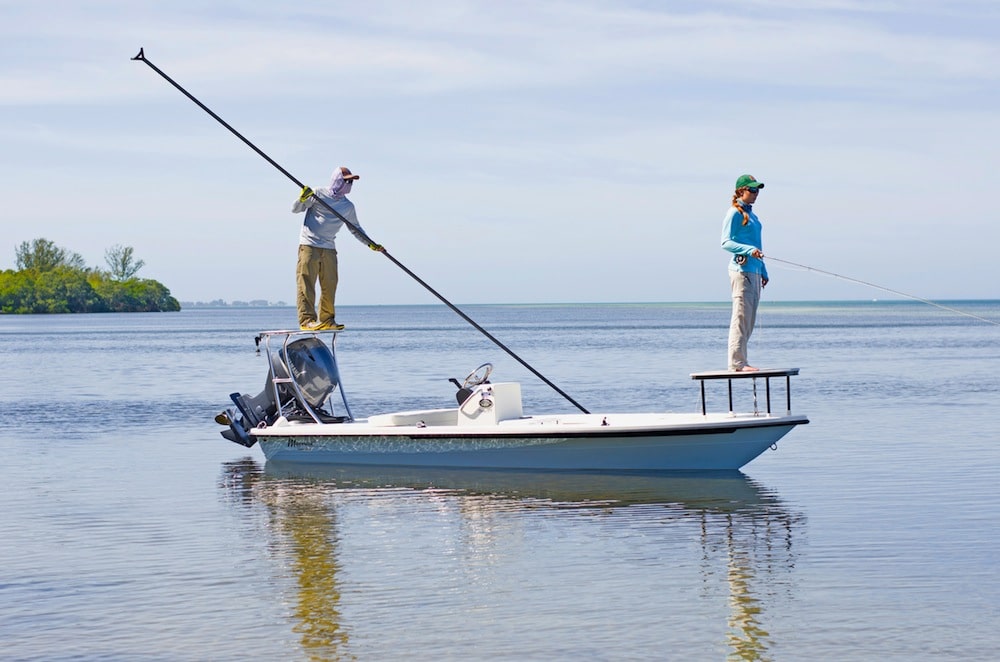
Today’s lightweight construction materials and advanced boatbuilding techniques have resulted in ultralight skiffs that draw as little water as possible.
Johnson points to the feather-light carbon fiber boatbuilding technology used in conjunction with the company’s vacuum-assisted resin-infused system (VARIS), which minimizes weight yet maintains strength in the HPX models. “A technical poling skiff might look simple,” says Johnson, “but it actually represents today’s most advanced boatbuilding materials and state-of-the-art construction techniques.”
Another key to cutting weight isaccording to Peterson. “You’re not going to find a bunch of upholstered helm chairs, a trolling motor or battery banks like you might have on a bay boat,” he says. Accessories add weight, and that runs contrary to a skiff’s mission, which is essentially allowing two lighttackle anglers to fish the shallowest water possible.
To give you an idea of how well this philosophy can work, the 17-foot-8-inch Hell’s Bay Professional hull weighs just 625 pounds, and draws only 4½ inches at rest with engine and fuel.
Technical Poling Skiff Hull Design
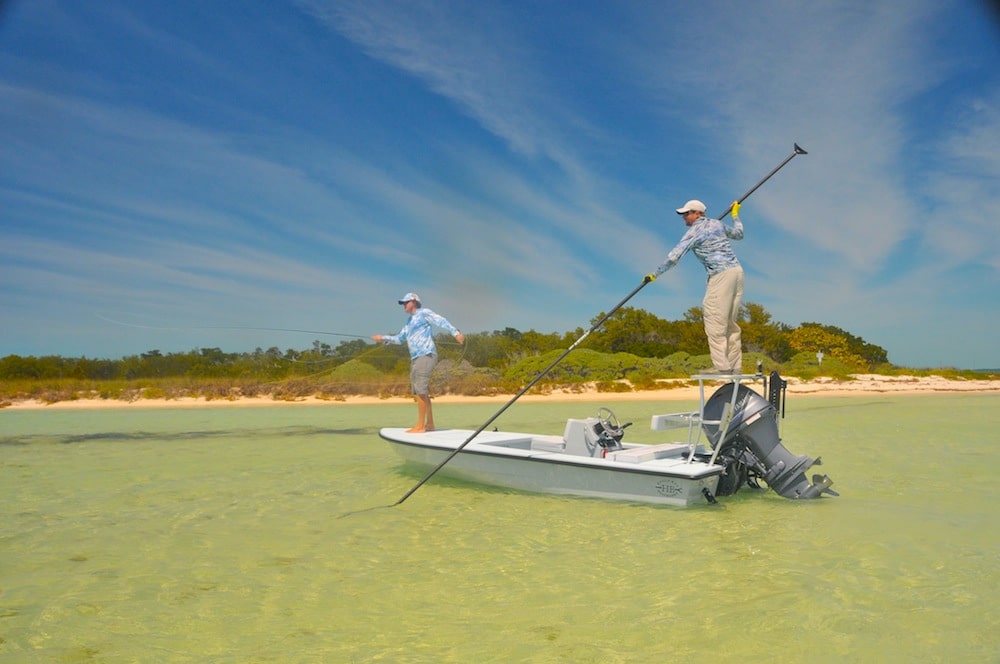
Bonefish and permit are super sensitive to sound in skinny water. So skiff builders pay particular attention to making hulls as quiet as possible, especially when it comes to water slapping against the bottom and sides.
“You’ll find a lot of rounded edges in our skiffs,” says Peterson. “This not only minimizes slap, but it also changes the pressure wave of the boat. Every object in the water creates pressure, so you cannot eliminate it, but I believe you can change it to something more natural, like the rounded sides of a manatee versus the hard edges of a man-made object.”
With hull structures such as chines and strakes, the idea is to make sure they stay either well below or well above the water when the boat is at rest, thus ensuring they don’t generate slap. Another unique characteristic of technical poling skiffs is the tendency to drift with the bow into the wind, according to Johnson. “Mirage HPX hulls carry the bow stem farther under the hull,” he explains, “and this causes the boat to drift with its bow into the wind, which makes it far easier to pole the boat on a breezy day.”
A technical poling skiff also features a relatively flat bottom. The Hell’s Bay Professional, for instance, measures zero degrees deadrise at the transom. While that minimizes draft, it will also give you a thumpin’ if you need to cross a nasty stretch of water. All boats come with compromises, and the sacrifice for the ability to fish the skinniest water is a rougher ride.
Propulsion Needs
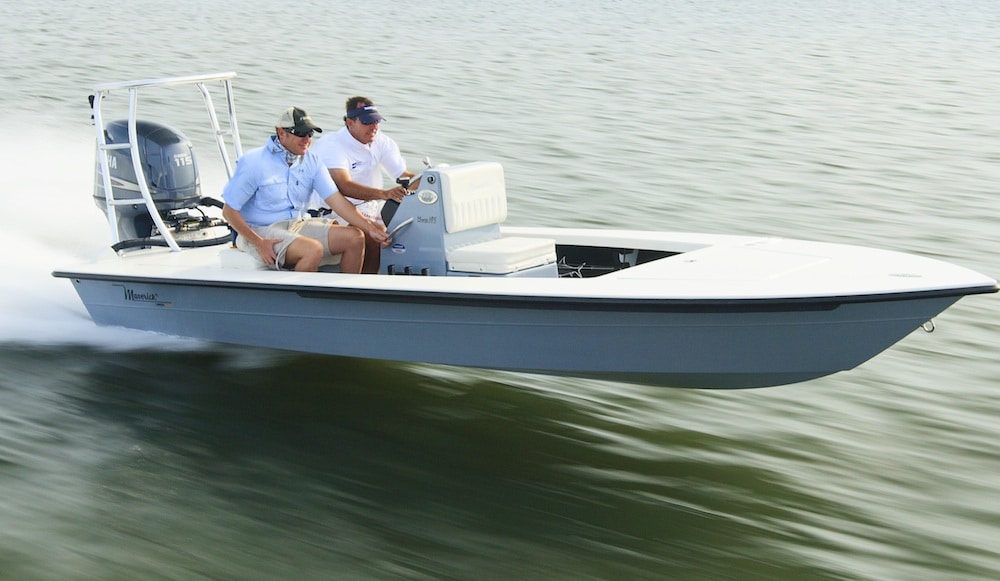
The lightweight nature of technical poling skiffs means you don’t need as much power as you might, say, with a heavier bay boat. Many skiffs run plenty fast with as little as a 40 hp outboard, though most anglers opt for at least 60 hp. Still, the smaller the outboard, the lighter the overall boat.
The jury seems to be out on whether motorized jack plates are a good idea on a technical poling skiff. Peterson likes them for their ability to raise the outboard when accelerating in the flats but admits that they add weight. He is also quick to point out the skiff needs to be designed from the outset to accept a jack plate. “If not, adding weight astern can throw off the boat’s center of gravity and spoil its ability to fish skinny water,” he explains.
One thing’s for sure: Once you’re fishing the flats with a technical poling skiff, it’s human power only. No trolling motors, just a pole. So if you’re not proficient at poling, you’d better learn that dance soon.

